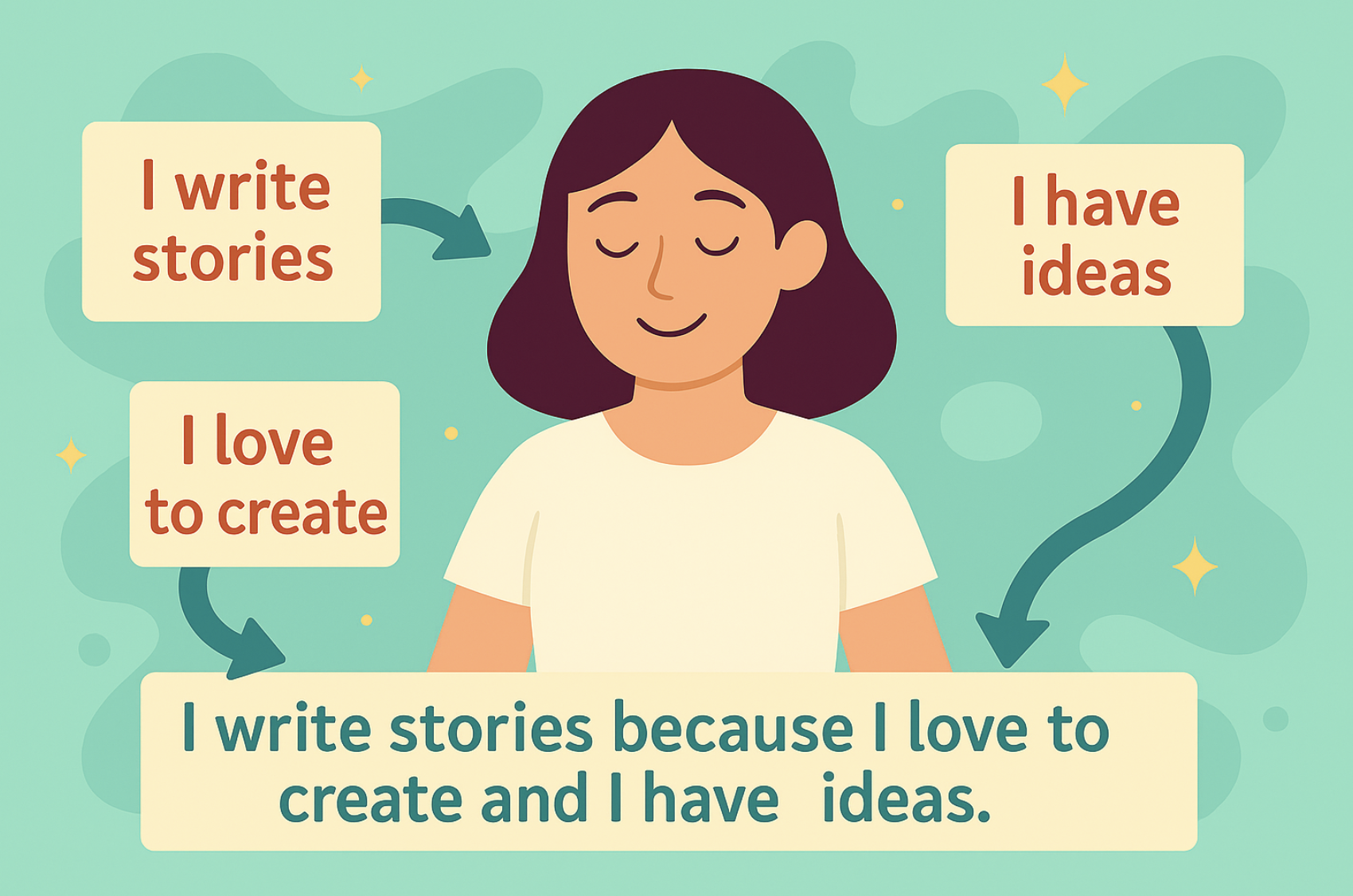Imagine sitting down to write, only to realize hours have slipped by with little progress. For many writers, this scenario is all too familiar. Effective time management isn’t just a productivity buzzword—it’s a crucial element that can make or break your writing success by fostering better time management skills, which are essential for achieving a balanced life.
This article, explores the best tools and techniques to help you manage your time more effectively. Time management is important in both personal life and professional spheres. From powerful apps to proven strategies, we’ll cover everything you need to boost productivity and sharpen your time management skills. Whether you’re juggling multiple writing projects or striving to meet tight deadlines, these insights will help you stay focused, organized, and on track. Let’s dive in and transform the way you approach your writing time!
Mastering the Clock: The Role of Time Management in Writing
Time management in writing means strategically planning and controlling how much time you spend on various writing tasks to boost productivity and efficiency. It’s essential because good time management helps you meet deadlines, maintain a steady workflow, and enhance the quality of your work.
Your Publishing Journey Awaits – Start NowWriters often struggle with distractions, procrastination, and the overwhelming feeling of juggling multiple projects. These challenges can lead to missed deadlines and subpar writing.
Mastering time management offers numerous benefits: it reduces stress, improves focus, and allows for better work-life balance. By effectively managing your time, you can produce higher-quality content, meet your goals, and enjoy a more satisfying writing experience. Implementing time management techniques is the key to unlocking your full potential as a writer.
Essential Time Management Skills for Writers
To excel as a writer, mastering key time management skills is crucial. These include prioritization, goal setting, and organization. Each skill plays a vital role in ensuring you stay on track and produce your best work efficiently.
Prioritization involves identifying the most important tasks and focusing on them first. This helps you tackle high-impact projects without getting bogged down by less critical activities. To develop this skill, create a daily to-do list and rank tasks by their urgency and importance. Using techniques like the Eisenhower Matrix can help you categorize tasks into four quadrants: urgent and important, important but not urgent, urgent but not important, and neither urgent nor important. Urgent tasks require immediate attention, while important tasks contribute to long-term goals. By consistently prioritizing effectively, you’ll ensure that crucial deadlines are met and essential tasks are completed.
Goal Setting is about defining clear, achievable objectives for your writing projects. Start by setting long-term goals, such as completing a novel or launching a blog, and break them down into smaller, manageable milestones. Use the SMART criteria (Specific, Measurable, Achievable, Relevant, Time-bound) to ensure your goals are realistic and trackable. Regularly review your progress and adjust your goals as needed to stay motivated and on course.
Organization involves creating a structured approach to your writing tasks. This includes maintaining an organized workspace, managing your time effectively, and using tools to keep track of your projects. Develop a consistent writing schedule, set specific times for brainstorming, drafting, and editing, and use project management tools like Trello or Asana to stay organized. By streamlining your writing process, you’ll minimize wasted time and maximize productivity.
Examples of Impact
- Prioritization allows you to focus on completing high-priority projects, ensuring deadlines are met, and reducing last-minute stress.
- Goal Setting keeps you motivated and provides a clear roadmap for your writing journey, making large projects less daunting.
- Organization helps maintain a steady workflow, preventing clutter and confusion, and enabling you to produce high-quality content consistently.
Developing these essential time management skills will significantly enhance your writing efficiency and help you achieve your writing goals with less stress and greater satisfaction.
Effective Time Management Techniques
Implementing effective time management techniques can revolutionize your writing process, helping you stay focused and productive. Here, we’ll explore three popular techniques: the Pomodoro Technique, Time Blocking, and the Rapid Planning Method (RPM).
Pomodoro Technique
The Pomodoro Technique is a simple yet powerful method that involves breaking your work into short, focused intervals called “Pomodoros,” typically 25 minutes long, followed by a 5-minute break. After completing four Pomodoros, take a longer break of 15-30 minutes. This technique helps maintain high levels of concentration and prevents burnout.
Tips for Implementation:
- Set a timer for 25 minutes and work on a single writing task without interruptions.
- Take a 5-minute break after each Pomodoro to relax and recharge.
- Use a tracking tool like Pomodone or a simple tomato-shaped timer to monitor your sessions.
Time Blocking
Time Blocking involves dividing your day into distinct blocks of time, each dedicated to a specific task or group of tasks. This technique ensures that you allocate adequate time for all your writing activities and minimize distractions.
Tips for Implementation:
- Identify your peak productivity hours and block them for your most important writing tasks.
- Schedule specific blocks for brainstorming, drafting, editing, and research.
- Use digital calendars like Google Calendar or tools like Trello to visualize and manage your time blocks.
Rapid Planning Method (RPM)
RPM, developed by Tony Robbins, is a results-oriented technique that focuses on identifying your desired outcomes and creating a detailed action plan to achieve them. It involves three steps: capturing all tasks, organizing them by priority and outcome, and scheduling them.
Tips for Implementation:
- Start by listing all tasks related to your writing projects.
- Define the desired outcome for each task and prioritize them based on their importance and urgency.
- Create a detailed action plan and schedule each task using a planner or digital tool like Evernote.
Practical Tips for Implementing These Techniques
Experiment with different techniques to find the one that best suits your writing style and workflow. A project manager can utilize these techniques to oversee writing projects and manage clear roles among team members. Combine techniques if needed; for example, use Time Blocking to schedule Pomodoro sessions. Stay flexible and adjust your approach as you discover what works best for you. Regularly review and refine your time management strategies to ensure continuous improvement.
By integrating these effective time management techniques into your writing routine, you’ll boost productivity, stay organized, and consistently meet your writing goals.
Your Publishing Journey Awaits – Start NowTop Time Management Tools for Writers
When it comes to time management, the right tools can make all the difference in enhancing productivity and keeping your writing projects on track. Here’s an overview of key features to look for in time management tools, along with a detailed look at three top tools: Trello, Asana, and Todoist.
Key Features to Look for in Time Management Tools:
- Task Management: Ability to create, organize, and prioritize tasks.
- Project Tracking: Tools to track the progress of your projects.
- Collaboration: Features that enable easy collaboration with team members.
- Deadline Management: Setting and reminding about deadlines.
- User-Friendly Interface: Easy to navigate and use.
- Customization: Ability to tailor the tool to fit your specific needs.
- Integration: Compatibility with other apps and tools you use.
Top Tools for Writers
Here we’ll give you a breakdown of time management tools in writing.
Key Features to Look For
- Task Assignment: A good time management tool should allow you to assign tasks easily. This helps in keeping track of what needs to be done and who is responsible for each task.
- Time Tracking: Effective time management tools come with time tracking features. This allows you to monitor how much time is spent on each task, helping you to identify areas where you can improve efficiency.
- Team Collaboration: When managing projects and enhancing teamwork, a team collaboration tool is essential. These tools streamline processes by offering features such as task assignment, time tracking, and project organization. They improve efficiency for teams working on projects together, making them indispensable for writers who often work in collaborative environments.
1. Trello
Trello is a versatile project management tool that uses boards, lists, and cards to help you organize your tasks visually.
Pros:
- Visual Organization: Trello’s card system is intuitive and helps visualize tasks and their status.
- Flexible and Customizable: Highly adaptable to different workflows and project types.
- Collaboration: Easy to share boards with team members and collaborate in real time.
- Integration: Connects with various apps like Google Drive, Slack, and Evernote.
Cons:
- Limited Features on Free Plan: Advanced features require a paid subscription.
- Can Get Overwhelming: Boards can become cluttered with too many cards.
2. Asana
Asana is a powerful project management tool designed to help teams track their work and ensure that projects stay on schedule.
Pros:
- Comprehensive Task Management: Offers detailed task creation, tracking, and management.
- Team Collaboration: Excellent for managing team projects with features like task assignments and comments.
- Project Visualization: Multiple views (list, board, calendar) to see the project progress.
- Integration: Works well with tools like Dropbox, Slack, and Google Calendar.
Cons:
- Complex for Simple Projects: This may be too feature-rich for individual or simple projects.
- Learning Curve: Takes time to learn and fully utilize all features.
3. Todoist
Todoist is a user-friendly task manager that helps individuals and teams keep track of their tasks and projects.
Pros:
- Simplicity: Easy to use with a clean, intuitive interface.
- Task Prioritization: Features like priority levels and due dates help manage tasks effectively.
- Integration: Connects with various tools including Gmail, Google Calendar, and Slack.
- Cross-Platform: Available on multiple platforms (web, mobile, desktop).
Cons:
- Limited Project Management: Lacks advanced project management features.
- Premium Features: Many useful features are only available with a premium subscription.
Tips for Selecting the Right Tool:
- Assess Your Needs: Determine what features are essential for your writing projects.
- Consider Your Workflow: Choose a tool that complements your workflow and writing style.
- Test Multiple Tools: Take advantage of free trials to see which tool feels most comfortable and effective.
- Evaluate Integration Needs: Ensure the tool integrates well with other apps you use.
- Budget: Consider the cost of premium features and choose a tool that offers the best value for your needs.
Selecting the right time management tool can significantly enhance your productivity and streamline your writing process. By considering the features, pros, and cons of each tool, you can find the one that best fits your individual needs and preferences.
Time Tracking Software for Writers
Tracking your time is a vital step toward better productivity and efficiency in writing. By understanding how you allocate your time, you can identify patterns, eliminate distractions, and optimize your writing schedule.
Toggl
Toggl is a simple, user-friendly time-tracking tool that helps you log the time spent on various tasks.
- Key Features: One-click time tracking, detailed reports, and integrations with other tools.
- Usage Tip: Use Toggl to track the time spent on different writing stages, such as brainstorming, drafting, and editing. Review weekly reports to identify areas for improvement.
RescueTime
RescueTime runs in the background, tracking how you spend your time on your computer and mobile devices.
- Key Features: Automatic tracking, detailed activity reports, and productivity scores.
- Usage Tip: Analyze your daily and weekly activity reports to see how much time you spend on writing versus distractions like social media. Use this data to set goals and limits for non-productive activities.
Clockify
Clockify is a comprehensive time-tracking tool with a focus on project management and team collaboration.
- Key Features: Unlimited tracking, project and task categorization, and detailed analytics.
- Usage Tip: Create separate projects for each writing task. Use Clockify’s analytics to determine which projects take up the most time and adjust your schedule accordingly.
Optimizing Your Writing Schedule
By consistently using time-tracking software, you can gather valuable data on your writing habits. Identify peak productivity hours and schedule your most challenging writing tasks during these times. Recognize patterns of distraction and implement strategies to minimize them. With regular analysis and adjustments, you can create a writing schedule that maximizes productivity and minimizes wasted time.
Your Publishing Journey Awaits – Start NowProject Management Tools for Writing Projects
Project management tools can significantly enhance the organization and execution of writing projects. They help streamline workflows, keep track of deadlines, and facilitate collaboration, making them invaluable for both individual writers and teams.
Monday.com
Monday.com offers a highly visual and customizable platform for managing writing projects.
- Key Features: Task boards, timeline views, automation, and integration with other tools.
- Usage Tip: Use Monday.com to break down your writing projects into manageable tasks, set deadlines, and track progress with Gantt charts or Kanban boards. This helps maintain a clear overview of your project’s status.
Notion
Notion is an all-in-one workspace that combines notes, tasks, databases, and calendars.
- Key Features: Customizable templates, relational databases, and collaboration features.
- Usage Tip: Create a centralized hub for all your writing resources, from research notes to task lists. Notion’s flexibility allows you to design your workspace to fit your specific needs, whether you’re working solo or with a team.
ClickUp
ClickUp is a comprehensive project management tool designed to handle tasks, docs, goals, and team collaboration.
- Key Features: Multiple views (list, board, calendar), goals tracking, time tracking, and integrations.
- Usage Tip: Utilize ClickUp to organize large writing projects by creating separate folders for each project. Assign tasks to team members, set priorities, and track progress in real time to ensure everyone stays aligned and deadlines are met.
Enhancing Team Collaboration
For team projects, these tools offer features that foster collaboration and communication. Assign tasks to specific team members, add comments, and attach files to ensure everyone has access to the necessary information. Use shared calendars to track deadlines and milestones, and set up notifications to keep everyone informed about updates and changes. This centralized approach reduces miscommunication and keeps the project moving smoothly.
By leveraging project management tools like Monday.com, Notion, and ClickUp, you can improve the efficiency and organization of your writing projects. These tools provide the structure needed to manage complex projects and enhance collaboration, ultimately leading to higher productivity and better outcomes.
Integrating Time Management Tools into Your Writing Process
Incorporating time management tools into your writing routine can significantly boost your productivity and efficiency. Here are some tips to help you smoothly integrate these tools into your daily workflow.
Start Small: Begin by introducing one tool at a time. This prevents overwhelm and allows you to fully understand and utilize each tool’s features.
Set Clear Goals: Define what you aim to achieve with each tool. For instance, use Trello to organize chapters of a book or Toggl to track time spent on research versus writing.
Create a Routine: Dedicate specific times each day to use these tools. For example, start your day by updating your task list in Todoist and reviewing your project board on Monday.com.
Be Consistent: Regularly using these tools is crucial for them to be effective. Make a habit of logging time, updating task statuses, and reviewing your progress daily.
Regular Reviews: Schedule weekly or monthly reviews to assess what’s working and what isn’t. Adjust your use of the tools based on these insights to continually improve your process.
Examples from Experienced Writers:
- Author J.K. Rowling: Known for meticulous planning, she uses detailed outlines and timelines (akin to digital tools like Asana) to organize her complex plots.
- Journalist and Author Malcolm Gladwell: Uses time tracking to balance writing with research, ensuring he allocates sufficient time to each phase of his projects.
- Blogger Pat Flynn: Utilizes Trello to manage his content calendar, collaborating with his team to ensure deadlines are met and tasks are efficiently delegated.
By following these tips and learning from the examples of successful writers, you can seamlessly integrate time management tools into your writing process. This not only helps in staying organized and meeting deadlines but also in maintaining a steady workflow that enhances overall productivity.
Wrapping Up: Embrace Time Management for Writing Success
Mastering time management is a game-changer for writers, transforming how you approach your projects and boosting your productivity. By incorporating the right tools and techniques, you can streamline your workflow, stay organized, and consistently meet your goals. Whether you’re using Trello to visualize tasks, Toggl to track your time, or the Pomodoro Technique to maintain focus, each method contributes to a more efficient writing process.
Remember, the key is to find what works best for you and stay consistent. Regularly review and adjust your strategies to keep improving. With the right time management skills and tools, you’ll not only enhance your writing efficiency but also enjoy a more satisfying and successful writing journey. Embrace these techniques, and watch your productivity soar!
Ready to take your writing to the next level? Join the Spines community today for more tips, tools, and resources to boost your productivity and achieve your writing goals. Visit our website to get started!
Your Publishing Journey Awaits – Start Now






